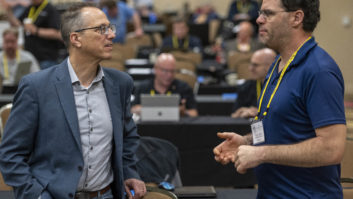LOS ANGELES��Local governments are increasingly concerned that interference from certain carrier wireless technologies operating in unlicensed spectrum�particularly the technology known as Long Term Evolution�Unlicensed could undermine key governmental, educational, and public safety functions that rely on Wi-Fi,� according to a recently published report entitled �LTE-U Interference in Unlicensed Spectrum: the Impact on Local Communities and Recommended Solutions� byctc technology and energy,an engineering and business consulting firm. The report is availablehere.�
�Communities use Wi-Fi for these functions because it delivers reliable, cost-effective connectivity. The potential for LTE-U to undermine Wi-Fi has serious implications for local governments, because LTE-U interference with Wi-Fi would:
- �Reduce the ability of local governments, libraries, and school systems to use cost-effective wireless technologies to serve their populations,
- �Hinder digital inclusion efforts aimed at allowing low-income groups to benefit from online services and resources
- �Force local governments into high-cost contracts with the very carriers that are introducing LTE-U
- �Impose unexpected budget gaps as local governments and school systems are forced to replace or augment already-purchased Wi-Fi-compatible equipment
- �Stifle the potential innovations of Smart City and Internet of Things developments�or potentially put wireless carriers in an unfairly advantageous position to charge cities for connecting innovative new devices
�
�A reasonable wireless environment without unfair interference is necessary for local government operations and innovation. �If LTE-U creates interference with Wi-Fi�if Wi-Fi is less reliable and less usable, and cannot expand into better unlicensed bands�then the potential innovation around Smart Cities and IoT that Americans are poised to be able to realize will be more costly, and there will be fewer technological solutions.
�To avoid LTE-U being deployed in a destructive way and to stay with the precedent set by other users in unlicensed bands (e.g., Bluetooth, ZigBee), the LTE-U Forum and standards development entities must continue to refine the standards for the technologies to ameliorate the issues described above and make it possible for LTE-U and Wi-Fi and other technologies to coexist.
�Fortunately, there is a path forward to address the risk to government systems created by LTE-U: the standards-setting process. To alleviate the risk of degrading Wi-Fi systems, and to preserve the benefits of Wi-Fi for local governments and local populations, policymakers should ensure that the industry introduces LTE-U as it has introduced the major new unlicensed technologies of the past. That means bringing the technology to a technology standards body, designing tests through an open process, and then making adjustments to ensure that both LTE-U and other unlicensed technologies can thrive without displacing existing users.
�We believe that this process should include adding basic co-existence features to LTE-U such as LBT (listen before talk) combined with greater sensitivity and increases in back-off time, all with the goal of making LTE-U coexist effectively with Wi-Fi and other technologies. This approach has been proposed and endorsed by a wide range of wireless users and stakeholders�including service providers, equipment manufacturers, wireless industry standards bodies, and application and technology developers�and would produce sharing that would protect government systems without the need for new regulation.�
Again, the entire paper is availablehere.�
�












